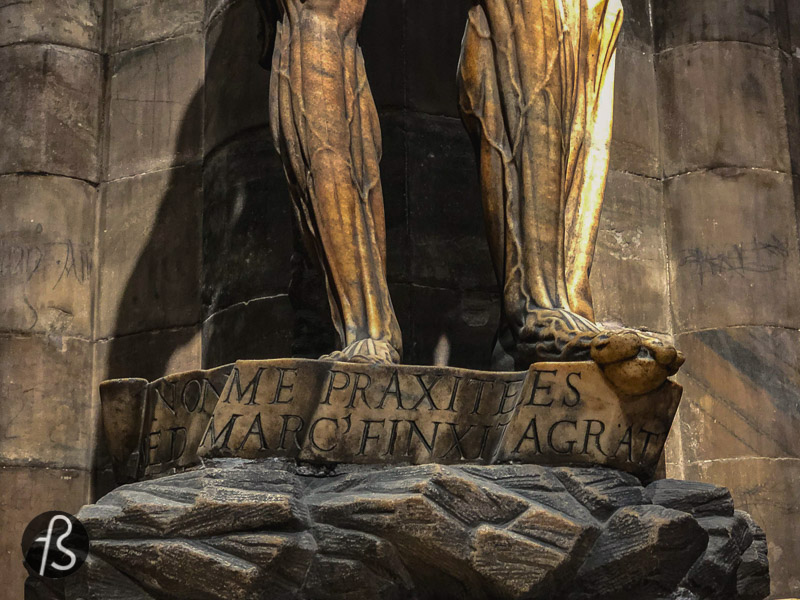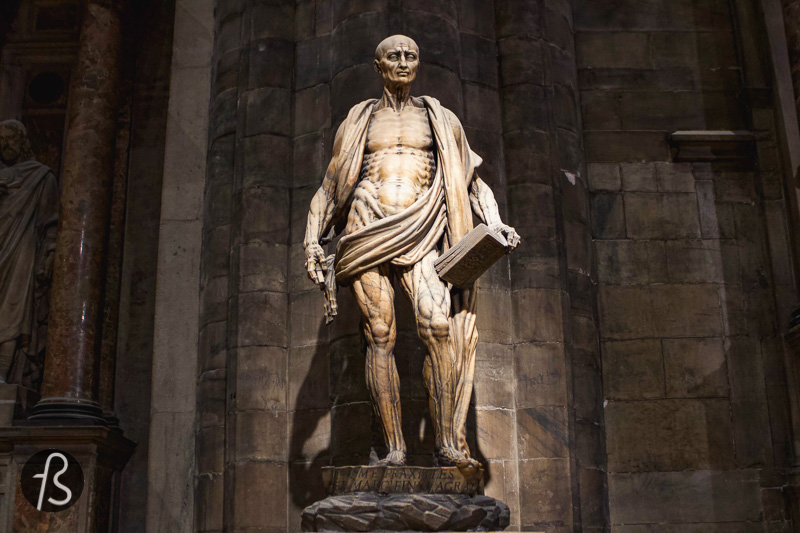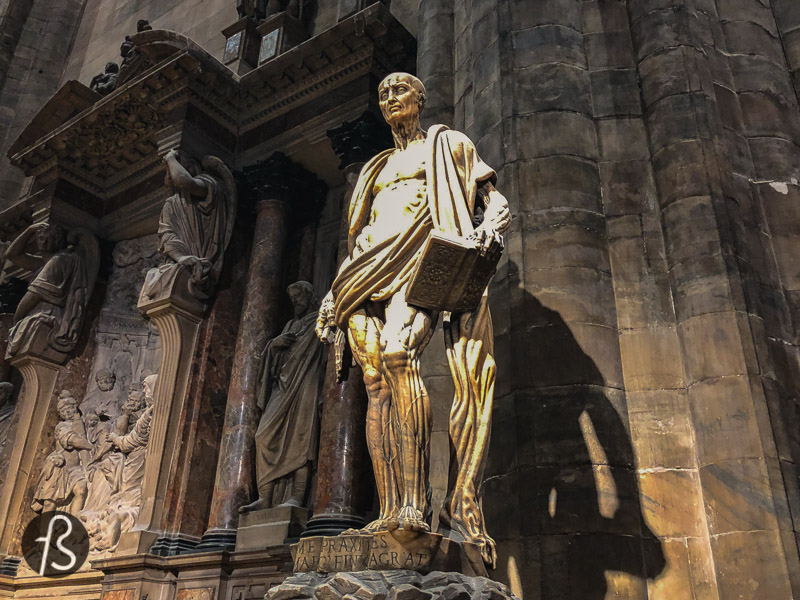When I visited the Duomo di Milano for the first time, one particular sculpture caught my attention. The piece is called St Bartholomew Flayed, and it was created by Marco d’Agrate in 1562. That skinless statue is so unusual that I had to research it and write this article using everything I know now about it.
The first time I visited Italy was back in 2015, and Milan was a big part of this experience; I still remember my surprise when I saw the Duomo for the first time. Everything was even more magical inside since I didn’t imagine how large it would be.
But the main piece that caught my attention was this insane-looking sculpture between the Presentation altar and the one devoted to St Agnes. Standing high on a pedestal, one of the twelve apostles of Christ is represented here as he dies. Executed for his Christian faith, St Bartholomew is represented here.
Unveiling St. Bartholomew Flayed: Art and Anatomy in the Duomo di Milano
According to legends, the apostle Bartholomew was skinned alive and beheaded. He is often represented like that, but not how Marco d’Agrate presents him here. Here, he looks like a man carrying a drape around his shoulders and body—but that is his skin.




Until the XIII century, St Bartholomew was portrayed holding a knife and a book as a way to present the martyrdom he suffered.
Only in the Renaissance did the saint start being represented with his skin removed from his flesh. The work of Marco d’Agrate doesn’t focus on the saint’s faith or martyrdom. His focus here is another sphere of interest: studying human anatomy.
The Story of St. Bartholomew Flayed: Inside Milan’s Iconic Cathedral
The statue of St. Bartholomew Flayed inside the Duomo di Milano is a careful study of muscles and the human body’s structure. Some might call it an artist exercise.
For a long time, the statue of St Bartholomew Flayed stood outside the Duomo di Milano. It was only in 1664 that it was moved inside to a place more suitable for admiring such a beautiful piece of art.
Almost 500 years later, the St. Bartholomew Flayed still marvels at those who come by the cathedral. This is a continuous surprise to visitors since it isn’t a sight we often see.
Besides its anatomy, one exciting thing about the statue is the short inscription at the foot of the figure. There, it says Non me Praxiteles, sed Marcus finxit Agrates, referring to Marco d’Agrate’s fear of having his work confused with Praxiteles, one of the most talented sculptors in Ancient Greece.



If you want to visit the statue of St Bartholomew Flayed, you have to book a tour of the Duomo di Milano. Inside, among other beautiful things, you will find this exercise in anatomy.
St. Bartholomew Flayed: Exploring the Duomo di Milano’s Shocking Sculpture
Piazza del Duomo, 20122
Milano MI, Italy